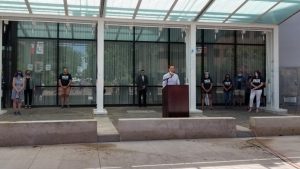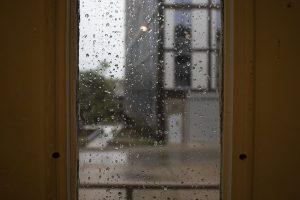UI faculty and student-led project maps history of segregation in Johnson County
The project, completed during the spring semester, used research and data from the Johnson County Recorder’s Office and illustrates the elements of systematic racism documented in the County’s history.
A map depicting housing segregation in Iowa City is seen on Wednesday, Aug. 26, 2020.
August 26, 2020
Racist restrictions on property — both formal and informal — were common practices in the first half of the 20th century, including in Iowa City. During the last semester, University of Iowa Professor of History Colin Gordon led a group of undergraduates in mapping out these policies on the local level.
Historians have always known about these racist practices as they are documented in property deeds held at the county recorder’s office, Gordon said. Researchers put together digital books from scanned pages, looking for words like “caucasian” or “colored”, and recorded its location to make a map of restrictive deeds from 1910-1950.
“We were able to identify in Iowa City [and] Johnson County, where these restrictions were located,” he said. “And once we knew where they were we could put them all in a map, make copies of the restrictions and build the website up from there.”
He said these restrictions were common until 1948, when the Supreme Court made them unenforceable in Shelley v. Kraemer. In 1968, this became fully illegal to write such a deed with the passage of the Fair Housing Act.
RELATED: Iowa City man arrested, charged with hitting Black Lives Matter protesters with car
“What we argue is they have a huge impact long term, because…they made it harder for particularly African Americans to buy property, and that sort of rippled through the generations,” Gordon said. “If your parents didn’t own a house, you didn’t inherit the equity of that house, and made it harder for you to buy a house.”
Gordon said this is one reason why African American homeownership rates are lower than white homeownership rates — especially in Midwestern cities such Minneapolis, Chicago and St. Louis.
RELATED: Nationwide zoom outage prevents students from attending classes
One thing Gordon said he found surprising about Johnson County was the prevalence of the racist restrictions in the 1920s and the 1940s. There were fewer than 100 African Americans living in Johnson County at the time.
“What you see in Iowa City and in some other similar settings is people put these restrictions on their property even when there are no African Americans living anywhere nearby and no threat that they’re about to move into your neighborhood,” Gordon said. “But it just became a way of sort of signaling, ‘this is white space.’”
Johnson County Recorder Kim Painter said her office was able to assist with Gordon’s project by preparing a data file of the documents the project needed to assess using optical character recognition.
Painter said the thousands of pages of documents are primarily made up of things such as how high fences or shrubs can be.
“It’s all this very dry kind of stuff and then you’ll see wording that says, ‘It exists for the sole use and benefit of the Caucasian race,’” she said. “And the first time you see something like that, in the middle of this kind of formulaic historic document about the use of the land and access to the land of a particular parcel or subdivision, it just shocks you.”
UI second-year Jack Lauer was on the project’s team, as he was enrolled in the class titled Researching Local History, Housing and Racial Inequality.
Lauer said the mapping his team did serves as a link in the chain people can use to continue to do better by educating themselves.
“I think a lot of people prop [Iowa City] up to be this liberal oasis and has been historically since the University of Iowa has been housed here,” he said. “But this project is just one of many projects that serves to expose Iowa City, that Iowa City is just like all of these others.”
Lauer said as people continue to educate themselves, it’s important to still try and repair relationships with, and uplift certain communities.
“You can still see the repercussions of it to the Black community, with such a low Black population in Iowa City and Iowa as a total. It reverberates as feelings that Iowa City and Iowa [are] not a safe environment for Black individuals,” Lauer said.






